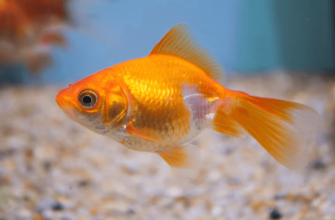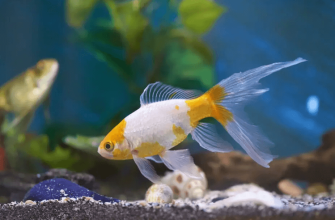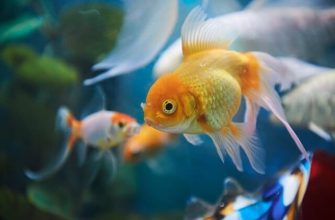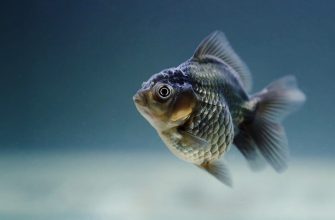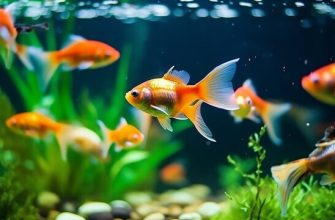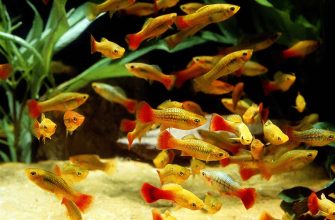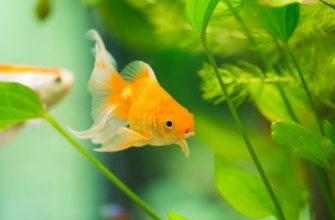Goldfish are one of the most popular freshwater fish kept as pets. With their vibrant colors, unique shapes and personalities, it’s no wonder they’ve been treasured for over 1,000 years.
However, sometimes goldfish exhibit behaviors that can puzzle or concern owners. One such behavior is when a goldfish stays in the corner of the tank. This could be harmless, or a sign something is wrong.
Possible Causes
One of the most common reasons for goldfish staying in the corner of the tank is improper water conditions. High levels of ammonia, nitrites, or nitrates can cause stress and discomfort for goldfish. Ammonia in particular is highly toxic and can burn gills and skin even at low levels. Checking water parameters and performing regular partial water changes can help lower ammonia and nitrates.
The temperature of the water is also important. Goldfish prefer temperatures between 65-72°F. If the water is too warm, the fish may go to the corners in an attempt to find cooler water. Using an aquarium chiller or fan to lower tank temperatures can help.
Incorrect pH can also cause stress. Goldfish thrive in a pH between 7.0-8.0. Drastic pH swings can irritate skin and gills. Using a pH buffer or RO water can help maintain a stable pH.
Testing water parameters frequently and making adjustments is key to ensuring proper water quality and happy, active goldfish.
Stress
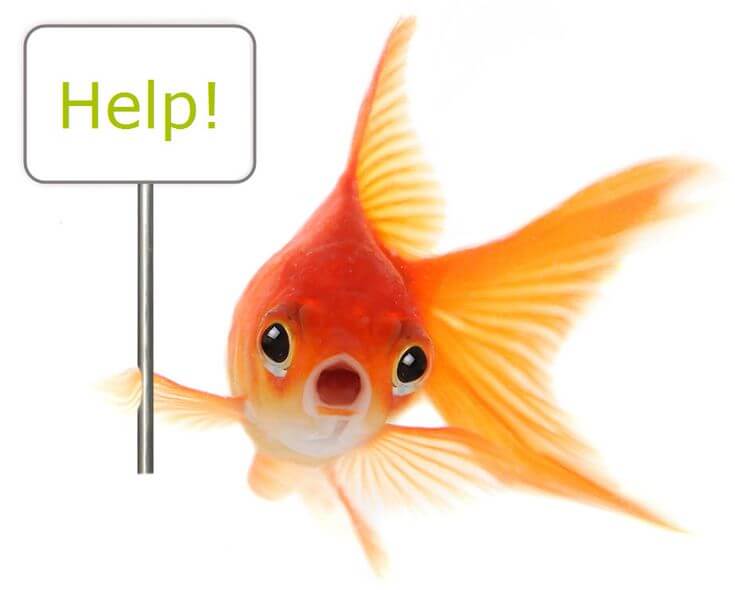
Stress is a very common reason for goldfish staying in the corner of the tank. Some potential causes of stress include overcrowding, small tank size, and aggressive tankmates.
Overcrowding can stress goldfish out as they do not have enough space to swim freely. The general rule is 20 gallons for the first goldfish plus 10-15 gallons for each additional goldfish. Similarly, too small of a tank, even with just 1-2 goldfish, can induce stress by not providing adequate room.
Aggressive tankmates like cichlids and catfish can intimidate and nip at goldfish, making them retreat to corners for safety. It’s best to avoid mixing slower, long-finned goldfish with faster, more aggressive species.
Monitoring water parameters, providing hiding spaces, and using tank dividers can help reduce stress when it’s caused by crowding and aggression issues. In severe cases, moving the goldfish to a larger tank or rehoming aggressive tankmates may be necessary.
Illness
Goldfish are susceptible to a variety of illnesses.
Some common illnesses include:
-
Swim bladder disorder: This affects a goldfish’s buoyancy and ability to swim properly. It’s often caused by constipation from overfeeding or feeding low-quality foods. Treatment involves fasting, feeding peas, and proper diet.
-
Bacterial infections: Fin rot and tail rot are common bacterial infections. They cause fraying fins and tail. Improving water quality and antibiotics can treat them.
-
Parasites: Common external parasites are ich and velvet. They look like white specks or velvety film on skin. Treating with medications and improving water quality helps. Internal parasites are also possible.
Proper tank maintenance, water quality, nutrition, and prompt treatment when signs of illness arise can help prevent and manage goldfish diseases. Consulting an aquatic veterinarian is recommended for proper diagnosis and treatment.
Improper Diet
An improper diet can cause goldfish to stay in the corner of their tank. Goldfish are omnivores and require a varied diet to stay healthy. A diet lacking in vegetable matter and proper nutrition can lead to deficiencies that cause lethargy and other symptoms.
Goldfish need a diet high in plant-based foods to thrive. Flake foods often lack essential vitamins and minerals found in vegetables. Sinking pellet foods formulated for goldfish contain spirulina, kelp, and other ingredients to mimic their natural diet.
A poor diet over time can cause organ damage, digestive issues, buoyancy problems, and a weakened immune system. Malnutrition makes goldfish prone to infections and disease. Lack of energy from poor nutrition may cause goldfish to stay still in corners rather than actively swimming. Improving their diet with nutritious sinking pellets and treats like blanched vegetables can help boost health.
Tank Setup
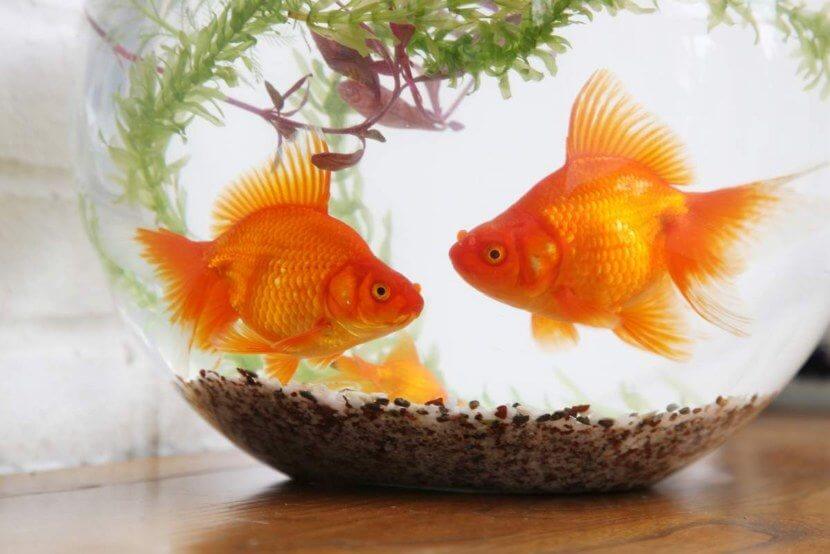
Many goldfish enjoy exploring and interacting with objects in their environment. An insufficiently enriched tank can lead to boredom and cause the fish to hide in corners. Goldfish benefit from live plants, rocks, driftwood, and other decorations that provide mental stimulation and places to explore. The tank should contain several hiding spots so the fish can get away if they feel stressed. Undergravel filters and plastic plants should be avoided, as goldfish may try nibbling on them and ingest potentially harmful materials.
The bottom of the tank should be covered with smooth gravel or sand substrate 2-3 inches deep, which allows the fish to sift through and interact with the material. Ultimately, a lack of enrichment and insufficient space to swim freely are common causes of corner-hugging behavior. Providing an appropriately sized tank with ample decorations and plants can help alleviate this issue.
Boredom
Goldfish kept in small tanks with no stimulation can become bored and listless over time. Lack of enrichment and interaction leads to understimulation, which may cause goldfish to isolate themselves in a corner of the tank. Goldfish are intelligent, social fish that require activity to thrive. Without proper stimulation, goldfish can fall into a state of chronic stress that weakens the immune system.
Providing an engaging environment is crucial. Adding plants, rocks, driftwood and substrates creates a more complex, enriching habitat. Tankmates like snails or shrimp also give goldfish something to interact with. Floating toys, mazes and feeding rings allow goldfish to forage and play. Training goldfish with target sticks or hand feeding builds a bond while providing mental exercise. With proper stimulation, goldfish become more active and engaged.
Troubleshooting
If you notice your goldfish staying in the corner of the tank, there are some steps you can take to troubleshoot the issue:
-
Test the water quality. Use a water testing kit to check levels of ammonia, nitrites, nitrates, pH, and temperature. Improper water quality is a common cause of stress. Do a partial water change if needed to improve conditions.
-
Observe your fish’s behavior closely. Note any signs of labored breathing, clamped fins, loss of appetite, or scratching. These may indicate an illness that requires medication.
-
Adjust the tank environment. Make sure the tank is not overcrowded and has places for the fish to hide if stressed. Check the filter flow isn’t too strong. Consider adding more plants, rocks, driftwood or tank decor to provide more comfort.
-
Evaluate the diet. Goldfish corner sitting can sometimes stem from nutritional deficiencies or improper diet. Vary food offerings and soak dry foods before feeding. Consider supplementing with blanched veggies.
-
Check the temperature. Rapid temperature fluctuations can cause stress. Get a tank thermometer and maintain a steady temp between 65-75°F.
-
Reduce stressors. Dim the lights, limit tank maintenance and hold off on tankmate introductions when fish are acting abnormal.
Observing your goldfish closely and making gradual adjustments can often resolve corner sitting. Seek help from experts if the behavior persists.
When to Seek Help
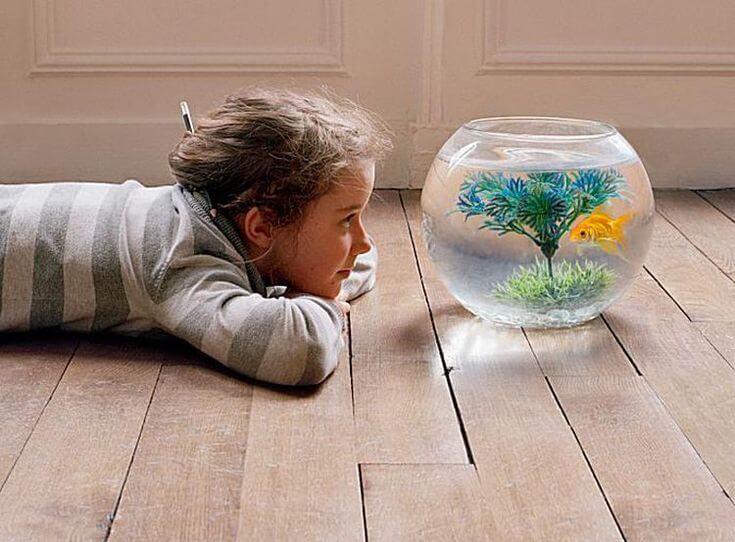
If your goldfish is staying in the corner of the tank for more than a day or two, it’s a good idea to seek help from a veterinarian who specializes in fish health. Prolonged corner-sitting behavior can be a sign of stress, illness, or other issues that require medical attention.
Some signs that a vet visit may be needed:
- Loss of appetite or not eating normally
- Clamped fins
- Lethargy or lack of normal activity
- Visible spots, lesions, or other abnormalities
- Gasping at the surface or having trouble breathing
- Hanging out in corners for more than 2 days
A fish vet will be able to run diagnostic tests and examine your goldfish to determine if there is an underlying medical issue. They can provide proper treatment if the fish is sick. Even if the goldfish seems healthy overall, a veterinarian may be able to identify causes of stress or other problems in your tank setup that are leading to the corner-sitting behavior.
With their expertise, you can get to the bottom of the issue and return your goldfish to normal activity levels. Don’t hesitate to seek professional advice if your pet’s behavior is abnormal for multiple days.
Conclusion
In summary, there are several possible reasons why your goldfish may be staying in the corner of its tank. The most common causes are stress, illness, improper diet, issues with the tank setup, or boredom. If your fish’s behavior persists, it’s important to closely observe it for signs of disease and test the water parameters. Make any necessary adjustments to improve water quality. Consider redecorating the tank and adding enrichment items to alleviate boredom.
Sometimes, patience is required while the fish adjusts to a new environment. However, if symptoms worsen or the fish seems to be suffering, seek help from an aquatic veterinarian right away. The corner behavior likely indicates an underlying issue that requires attention. With proper care and troubleshooting, your goldfish can get back to happily exploring its tank.

